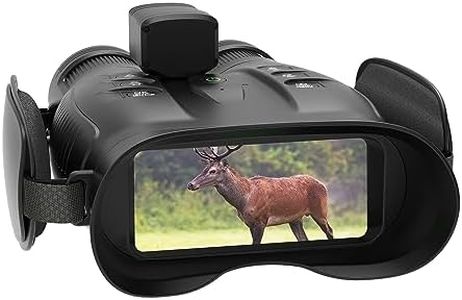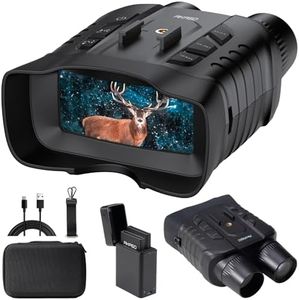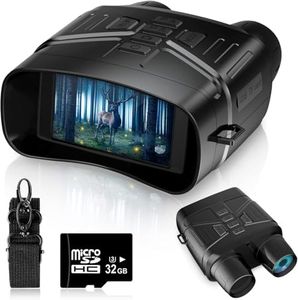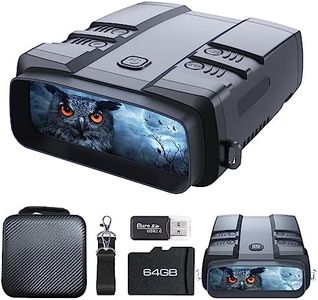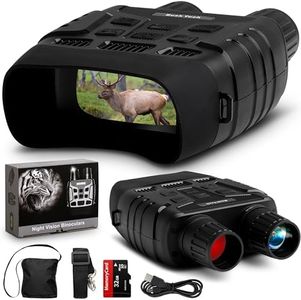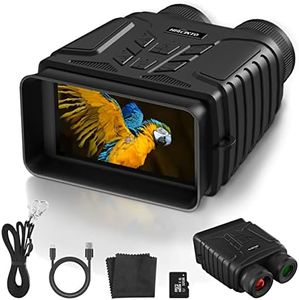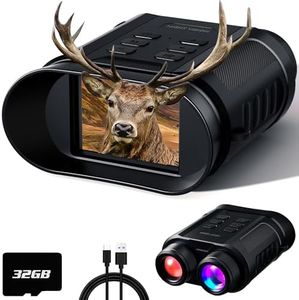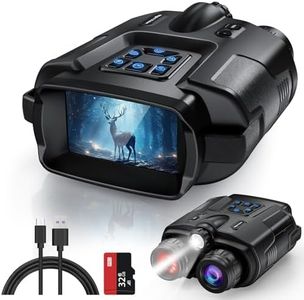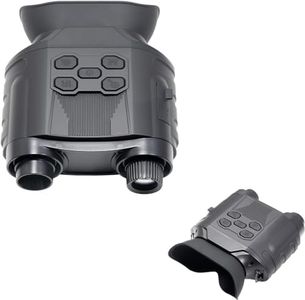We Use CookiesWe use cookies to enhance the security, performance,
functionality and for analytical and promotional activities. By continuing to browse this site you
are agreeing to our privacy policy
10 Best Night Vision Goggle
From leading brands and best sellers available on the web.Buying Guide for the Best Night Vision Goggle
Choosing the right night vision goggle (NVG) can make a big difference in your ability to see and navigate in low-light or complete darkness. Before picking a model, it's important to think about the main conditions and scenarios where you'll use the goggles – whether it's wildlife observation, security, navigation, or recreation at night. The right NVG can depend on how much portability, clarity, and ease of use you need. Understanding key features will help you make sure the goggles match your needs, keeping night-time adventures safe and enjoyable.GenerationThe 'generation' of a night vision goggle refers to the technology used inside to enhance images in the dark. Higher generations mean newer technology, with better brightness and clarity. Gen 1 is best for casual observation in close ranges and is often bulkier with a visible glow from the lens. Gen 2 offers improved image resolution and works better in darker conditions, making it more suitable for people who need more than basic viewing. Gen 3 and above are for demanding users, like professionals or serious outdoor enthusiasts, providing high clarity, longer ranges, and great low light performance. Consider how much detail and range you need when deciding on a generation – for general use, Gen 1 or 2 may be enough, but if you demand crisp images and high reliability, look at higher generations.
ResolutionResolution in night vision goggles means how clear and detailed the image appears when you look through the lens. Higher resolution numbers give you sharper images, making it easier to spot details in the dark. Resolutions can range from around 30 to over 60 line pairs per millimeter (lp/mm). For close-range navigation or casual spotting, lower resolution may be acceptable, but if you want to identify animals, read signs, or need detailed viewing for security or professional tasks, look for higher resolution goggles.
Field of View (FOV)Field of View describes how wide an area you can see through the goggles at a glance, usually measured in degrees. A wider field of view lets you spot more movement or objects at once and is helpful for surveillance, navigation, or group activities. Narrower fields of view bring more detail into the center but limit peripheral vision. If you plan to move around a lot, wider FOV is better; for focused observation or stationary use, a narrower FOV may be sufficient.
RangeThe range of a night vision goggle means how far you can see and still get a useful, visible image. Shorter-range goggles (under 100 meters) are good for activities like hiking, camping, or indoor security. Mid- or long-range options (100 meters and beyond) are best for hunting, outdoor surveillance, or navigation across large open spaces. Consider your typical environment; for close-up tasks, high range is less important, but if you need to see far, check for goggles with greater range.
Weight and Head-Mount CompatibilityThe weight and ability to mount night vision goggles to your head or helmet matter if you plan to move around or need hands-free operation. Lighter goggles are more comfortable for long periods, while heavier ones can become tiring or awkward. Not all goggles are designed for easy mounting, so look for models compatible with standard headgear if hands-free use is important. If you’ll be active or moving often, prioritize lighter and mountable designs.
Battery LifeBattery life refers to how long the goggles can operate before needing new batteries or a recharge. Long battery life is important for extended outings or for situations where recharging might not be easy (like camping or surveillance). If your use is mostly short sessions with easy access to spare batteries or charging, you can manage with shorter battery life. Always check what type of batteries are used and whether they are easy to replace.
Infrared (IR) IlluminatorAn IR illuminator is a built-in light you usually can't see with the naked eye, but it helps night vision goggles work in complete darkness where there's no natural light. Some goggles have powerful built-in IR lights; others may let you attach external ones. If you’ll often be in pitch-black conditions like caves or unlit woods, make sure your goggles have an IR illuminator. For environments with some ambient starlight or moonlight, this may be less crucial.
